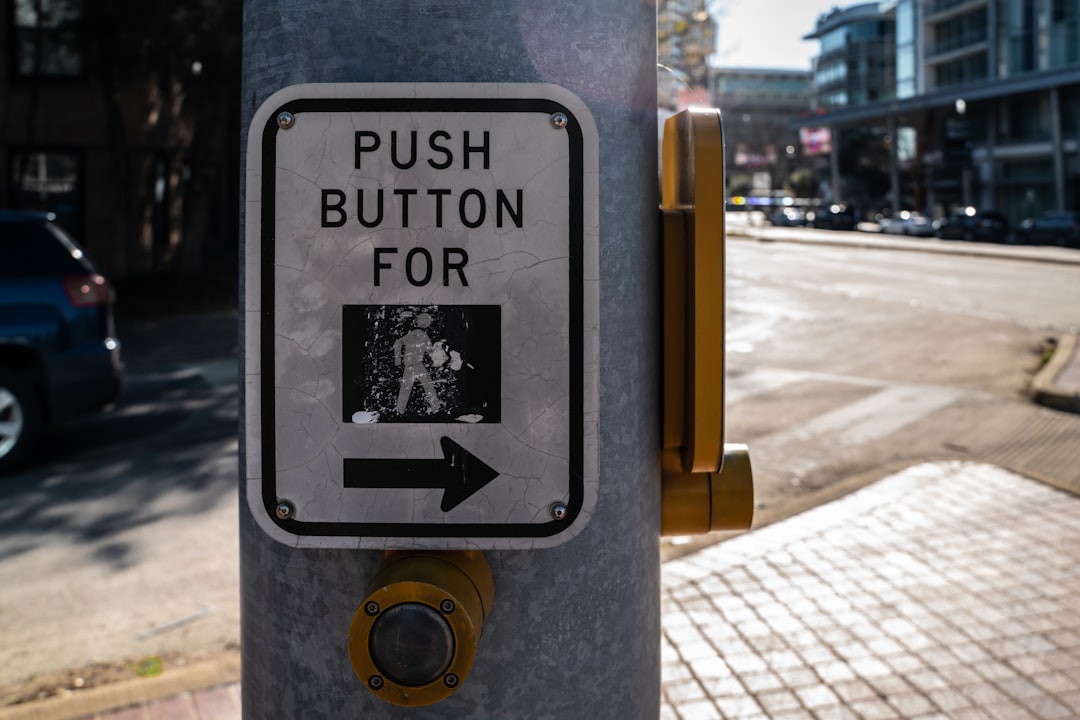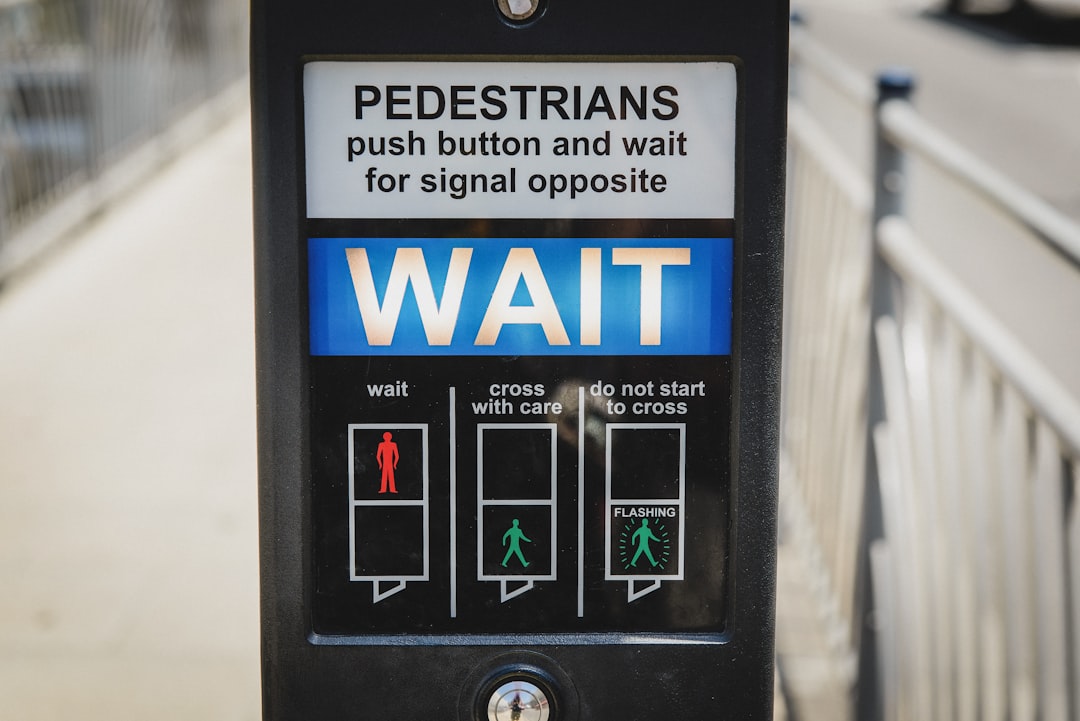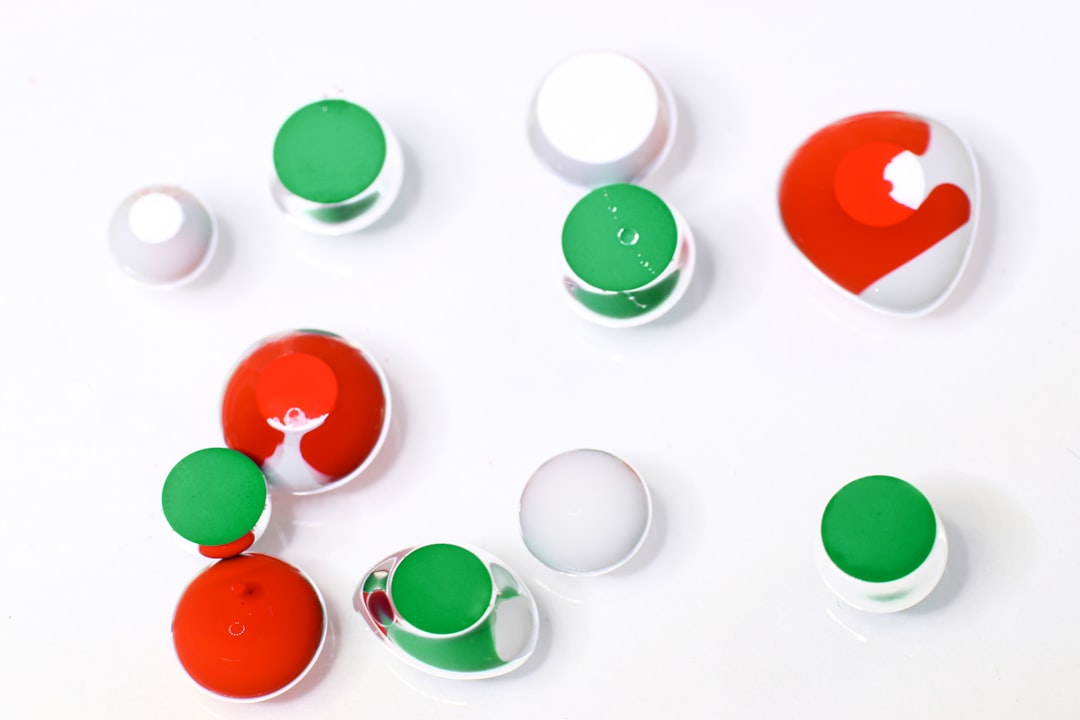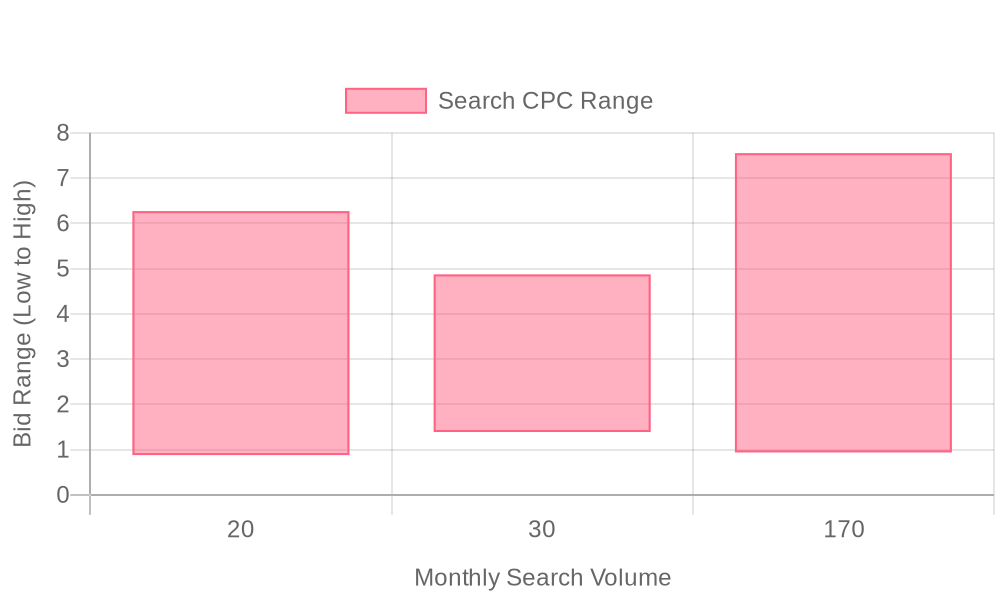
Supercharge your lead generation with a FREE Google Ads audit - no strings attached! See how you can generate more and higher quality leads
Get My Free Google Ads AuditFree consultation

No commitment
Supercharge your lead generation with a FREE LinkedIn Ads audit - no strings attached! See how you can generate more and higher quality leads
Get My Free Google Ads AuditFree consultation

No commitment
Supercharge your lead generation with a FREE Meta Ads audit - no strings attached! See how you can generate more and higher quality leads
Get My Free Google Ads AuditGet My Free LinkedIn Ads AuditGet My Free Meta Ads AuditFree consultation

No commitment
Supercharge your lead generation with a FREE Google Ads audit - no strings attached! See how you can generate more and higher quality leads
Get My Free Google Ads AuditFree consultation

No commitment
In today's dynamic advertising landscape, integrating interactive elements like buttons in your Google Ads can significantly enhance user engagement and conversion rates. However, advertisers in competitiveverticals often face the challenge of missing high-value prospects who don’t reach out directly, leading to lost opportunities. Keeping this in mind while staying compliant with Google's latest advertising policies is crucial, especially concerning the design and use of buttons to prevent misleading ads. Modern solutions now allow businesses to track these anonymous visitors, ensuring that ad spend targets genuine decision-makers with real intent. For professionals in the Google Ads for Advertising Buttons industry, understanding these updates and implementing best practices is essential for campaign success.

Maximizing lead generation from Google Ads for Advertising Buttons requires more than standard creative execution. Today’s B2B marketers benefit most by blending compliance, interactivity, and intelligent data unification into every campaign.
A major challenge remains in transforming anonymous traffic into actionable opportunities. By weaving together robust ad design, compliant button strategies, and real-time audience insights, businesses can ensure every high-fit visitor receives a tailored, engaging journey from ad click through to CRM enrichment.
To drive consistent results, it is essential to integrate interactive ad features—such as call-to-action buttons and product feeds—while strictly adhering to Google’s advertising button compliance standards. This means avoiding misleading button designs: standalone or oversized buttons in display ads can now trigger account penalties under the updated Google Ads button policy. Marketers should focus on using contextually relevant, clearly labeled buttons that naturally fit within the overall ad creative, ensuring engagement in Google Ads is both effective and policy-compliant.
Successful campaigns do not stop at creative compliance. Incorporating predictive buying stages and intent signals enables marketers to direct resources toward engaged prospects, reducing wasted spend and accelerating pipeline velocity. When these insights are paired with advanced visitor identification, teams can synchronize enriched audiences and dynamic segments directly into Google Ads and connected platforms, allowing ongoing audience updates as prospects move through the funnel. This approach not only boosts the quality of leads but also ensures that the return on investment is continuously measured and optimized with a transparent view into online and offline conversions. Ready to see smarter lead generation? Get started for free with Sona.

Google Ads provides a direct pipeline to decision-makers actively researching advertising button solutions, allowing revenue teams to engage prospects at the most influential moments. Immediate access to high-intent audiences means marketing budgets work harder, focusing spend where actual purchase interest exists.
Targeting capabilities within Google Ads are especially powerful for industries navigating compliance and rapid policy changes, such as advertising buttons. As Google updates its ad design guidelines, brands must ensure their creatives remain compliant while maintaining engagement and conversion rates. Connecting intent signals and ideal customer profiles (ICPs) with ad buying decisions enables tailored messaging that aligns with evolving regulations and buyer needs.
Utilizing real-time audience insights, marketers can identify which accounts demonstrate genuine in-market activity, ensuring campaigns shift focus as intent changes. When behavioral data is surfaced and paired with advanced scoring, teams can prioritize firms most likely to convert. This strategic approach enables quick pivots during peak seasons or in response to Google Ads button policy shifts, minimizing wasted impressions and driving measurable ROI.
Integrating dynamic data sources enhances Google Ads performance by keeping audience lists fresh and relevant as leads progress through the funnel. When enriched profile data and real-time interactions sync directly with advertising platforms, every campaign benefits from precise targeting and a unified view of engagement—streamlining efforts and maximizing conversion opportunities. Ready to see results? Get started for free with Sona.

Selecting the right Google Ads campaign format is essential for maximizing lead generation with advertising buttons. Each campaign type serves a distinct purpose, aligning ad delivery with user intent while adhering to the evolving Google Ads button policy and design guidelines for compliance and engagement.
By leveraging these campaign types and aligning them with precise data and compliance standards, B2B teams can elevate their advertising button strategies for greater demand generation and measurable growth. To explore more ways to segment and update audiences, visit our retargeting strategies. If you’re ready to optimize your campaigns, get started for free with Sona.

Uncovering new growth areas within Google Ads for Advertising Buttons requires a proactive approach, especially as audience lists quickly become outdated. B2B marketers focused on button-driven campaigns must consistently seek segments that competitors overlook, ensuring campaigns adapt to policy changes and evolving user expectations.
Conducting a competitor gap analysis reveals underserved market segments and helps marketers identify where their campaigns can stand out. By focusing on vertical keyword targeting—such as compliance-specific phrases related to Google Ads button policy and interactive ad features—teams can attract high-intent audiences while minimizing wasted impressions. This level of targeting is particularly useful as Google continues to refine design guidelines and crack down on misleading advertising button practices; for deeper strategies, explore our B2B marketing playbooks.
Content-driven retargeting campaigns can further drive engagement in Google Ads for Advertising Buttons. Using educational assets like case studies, compliance updates, and explainer videos, marketers can build credibility and bridge knowledge gaps within their audience. When these campaigns are paired with real-time audience updates, marketers ensure retargeting efforts stay aligned with emerging intent data, resulting in higher conversion rates.
Some organizations now integrate market intelligence tools to systematically refresh their audience lists as new buying signals surface. For example, platforms that unify CRM, web, and ad data can help marketers pinpoint visitors at the company level, dynamically update audience segments, and sync enriched audiences into ad channels and sales platforms. This unified approach enables revenue teams to capitalize on growth opportunities as soon as they arise—get started for free with Sona to stay ahead of industry shifts and maximize ROI from every campaign.

Audience segmentation for advertising buttons in Google Ads requires precise alignment with user intent and evolving compliance requirements. Moving away from static segmentation lists toward a dynamic, intent-driven model improves campaign agility and ensures messaging lands with relevance at every stage of the buyer journey.
Effective segmentation begins by defining clear user cohorts based on specific behaviors and compliance interests, such as users researching interactive ad features, those with a history of engaging with call-to-action buttons, or segments focused on understanding Google Ads design guidelines. Tailoring ad groups to match these granular profiles increases engagement rates and draws attention from users most likely to convert, while minimizing wasted impressions and irrelevant clicks.
Overlaying intent signals enables marketers to serve messaging that matches real-time needs. For example, campaigns targeting users interested in Google Ads button policy or advertising button compliance can adapt creative and copy as regulations shift, ensuring ads always meet the latest standards and user expectations. Integrating CRM data with audience lists provides a further layer of precision: when a lead’s intent or engagement level changes, audience segments can update automatically, allowing campaigns to target only the most relevant prospects. Leveraging auto-updating CRM audience features ensures segments remain accurate as leads move through the buying cycle, maximizing the impact of every advertising dollar while reducing manual upkeep.
Advanced audience management tools now allow seamless syncing of CRM and ad platform audiences, so B2B teams can confidently deploy segmentation that reflects the latest buyer behaviors and regulatory context. This unified approach results in higher engagement and conversion rates, as ad targeting adapts in real time to audience movement and compliance signals. For organizations prioritizing measurable growth and compliance in their advertising strategy, dynamic audience segmentation is a critical performance lever. To experience these benefits firsthand, get started for free with Sona.

| Industry | Keyword | Monthly Search Volume | Competition Level | Low Bid | High Bid |
| Advertising Buttons | advertising buttons pins | 20 | HIGH | 0.88 | 6.27 |
| Advertising Buttons | advertising buttons badges | 30 | HIGH | 1.39 | 4.87 |
| Advertising Buttons | advertising buttons | 170 | HIGH | 0.94 | 7.55 |
Precision in keyword selection directly impacts the efficiency and ROI of advertising campaigns. B2B marketers see stronger performance by structuring Google Ads strategies around terms with high intent, such as Google Ads compliant button design, effective ad buttons without misleading users, and ad button policy updates and compliance. These keywords attract decision-makers actively seeking compliant, high-converting ad designs, minimizing wasted spend on irrelevant clicks. For additional insights on policy changes, see this resource on Google's ban of misleading button designs.
A robust keyword approach uses advanced technology to filter out non-converting or irrelevant traffic. Leveraging negative keywords, teams maintain focus on queries that correlate with actual buyer intent. This ensures only traffic with a high likelihood of conversion reaches the landing page, boosting campaign efficiency. When platforms unify CRM, website, and ad data, revenue teams can identify which search terms result in genuine engagement and pipeline influence, further refining keyword lists for future campaigns. Explore how Sona can help identify high-intent website visitors and strengthen your keyword targeting.
Integrating real-time visitor identification and intent signals enables marketers to dynamically update negative and positive keyword lists. High-quality platforms sync behavioral insights and enriched company profiles with paid media channels, ensuring ads only serve to audiences progressing through the funnel. As button design policies evolve, continuous keyword optimization and compliance monitoring protect campaign investments and deliver sustained results. To put these strategies into practice, get started for free with Sona.
A robust keyword strategy for Google Ads for Advertising Buttons starts with a deep dive into policy and compliance-specific terms. Marketers should prioritize keywords that directly reflect current Google Ads button design guidelines, including "advertising button compliance," "Google Ads button design guidelines," and "interactive ad features." These terms help ensure ads align with evolving regulations, minimizing the risk of disapproval or account suspension.
Incorporating local modifiers—such as city or region—can elevate campaign relevance and improve engagement rates for businesses that serve distinct markets. Long-tail queries tailored to industry-specific needs, like "compliant call-to-action buttons for SaaS" or "B2B ad landing page CTA rules," will further refine targeting and reduce wasted spend. With real-time insight into visitor intent, marketers can dynamically update keyword lists to mirror shifts in audience behavior, ultimately allocating budget to the highest-potential accounts.
Ad copy must signal both compliance with Google Ads button policy and a commitment to trustworthiness. Highlighting adherence to updated advertising button compliance standards fosters confidence—statements like "Designed for Google’s 2025 CTA compliance" or "Fully aligned with latest ad button policies" assure audiences that your ads are safe and credible. For additional context on the latest policies, review the industry summary of Google’s ad button policy update. Strong calls to action with urgency, such as "Secure Your Demo—Compliant, Fast, Trusted," help drive swift engagement while maintaining transparency.
Each ad should be meticulously crafted to ensure alignment with the latest design guidelines. This includes avoiding misleading or oversized buttons and focusing on clarity in both messaging and visuals. By leveraging unified contact and account data, marketers can refine messaging for different segments, tailoring CTAs and value propositions based on precise audience attributes and in-market signals. This granular approach supports higher conversion rates and stronger campaign ROI.
Landing pages must create seamless user journeys that mirror the intent and promise of the originating ad. Clear pathways are essential—ensure headlines, copy, and CTAs remain consistent with ad messaging, reducing friction and confusion. Trust signals, such as compliance badges or customer testimonials, reinforce legitimacy and encourage conversion.
Clarity in CTAs is paramount, especially under the new Google Ads button policy. Avoid ambiguous or misleading button designs; use plain, actionable language that matches user expectations. Continuous analysis of contact and account-level journeys enables marketers to test landing page variations, optimizing placements and content for each high-value segment. Synchronizing CRM and ad platforms allows enriched lead profiles to flow directly into remarketing and nurture campaigns, closing the loop between ad engagement and sales outcomes. To see how you can launch compliant, high-converting campaigns, get started for free with Sona.
Maximizing the impact of your ads begins with integrating high-value educational content alongside product-focused campaigns. This approach attracts informed buyers, establishes brand authority, and nurtures leads beyond the initial click. For actionable strategies, explore our marketing playbooks, and consider how you can drive trust by aligning expertise with your ad experience.
Segmenting your audiences unlocks more efficient upselling and cross-selling opportunities. Leverage real-time audience updates integrated with your CRM to keep campaigns relevant as prospects progress through their journey. Dynamic audience syncing means consistently surfacing the right offers to the most likely converters, which can dramatically increase both campaign ROI and lifetime value.
Building partnerships with complementary industry players expands your reach and enhances your market position. When you collaborate on co-branded campaigns or share audience insights, you gain access to new leads and streamline compliance with the latest Google Ads button policy update. These relationships help ensure your creative assets remain effective and compliant as standards evolve.
With advanced visitor identification tools, marketers can move beyond anonymous traffic to pinpoint companies and decision-makers engaging with their advertising buttons. Real-time intent data enables you to shift campaign budgets toward accounts with high purchase intent, increasing conversion odds and providing actionable insights for optimizing every touchpoint in the buyer journey.
Enhancing your Google Ads strategy for advertising buttons demands a nuanced understanding of evolving compliance standards and user behavior trends. Proactive adaptation to policy changes—such as Google's updated guidelines on misleading button design—ensures your campaigns are both effective and risk-free, while referencing industry insights from the Sona blog can keep your team ahead of regulatory shifts.
Aligning campaigns with the latest design requirements sets a solid foundation for engagement, but true success comes from leveraging real-time data and actionable intent signals. Advanced platforms enable marketers to identify high-value visitors and dynamically sync enriched audience segments, allowing for precise retargeting and increased conversion rates.
A dynamic, responsive ad approach helps B2B revenue teams address industry-specific pain points, from attribution complexity to audience fragmentation. Integrating online and offline conversion data, along with CRM and ad platform syncing, delivers a holistic view of ROI and uncovers new opportunities for optimization. To experience the benefits firsthand, get started for free with Sona and empower your marketing team to maximize the impact of advertising buttons while maintaining a competitive edge within Google Ads.
As you navigate the evolving landscape of Google Ads, understanding the latest updates and best practices is crucial to optimize your advertising strategy. This guide has explored how to effectively incorporate interactive elements, such as buttons, in your ads to enhance user engagement and drive conversion rates, all while adhering to Google's policies against misleading design.
We've highlighted the challenges many advertisers face when designing ads that are both compliant and compelling. By focusing on the strategic placement and design of buttons, your ads can achieve higher click-through rates and ultimately lead to better results. Implementing these insights can transform your advertising approach, making it not just compliant but also highly effective.
Imagine a future where your ad campaigns consistently perform at their peak potential, engaging audiences with clarity and purpose. With the right tools and strategies, this vision is within reach. Empower yourself with actionable insights and take the first step towards elevating your advertising game. Start for free to experience a platform that unifies your go-to-market data and drives actionable insights, helping you turn advertising challenges into opportunities for growth.
Google's updated advertising policies require advertisers to avoid misleading button designs in display ads, such as standalone or oversized buttons, to prevent account penalties.
To comply with Google's Misleading Ad Design policy, use contextually relevant, clearly labeled buttons that naturally fit within the overall ad creative and avoid misleading or oversized button designs.
Best practices include using contextually relevant buttons that are clearly labeled and integrated naturally within the ad creative, ensuring compliance with Google's policies and enhancing user engagement.
Interactive buttons can enhance user engagement and conversion rates when used properly, as they provide a tailored, engaging journey from ad click to CRM enrichment.
Using misleading buttons can lead to account penalties under Google's updated advertising policies, potentially affecting ad performance and compliance status.
Join results-focused teams combining Sona Platform automation with advanced Google Ads strategies to scale lead generation

Connect your existing CRM

Free Account Enrichment

No setup fees
No commitment required

Free consultation

Get a custom Google Ads roadmap for your business
Join results-focused teams combining Sona Platform automation with advanced Meta Ads strategies to scale lead generation

Connect your existing CRM

Free Account Enrichment

No setup fees
No commitment required

Free consultation

Get a custom Google Ads roadmap for your business
Join results-focused teams combining Sona Platform automation with advanced LinkedIn Ads strategies to scale lead generation

Connect your existing CRM

Free Account Enrichment

No setup fees
No commitment required

Free consultation

Get a custom Google Ads roadmap for your business
Join results-focused teams using Sona Platform automation to activate unified sales and marketing data, maximize ROI on marketing investments, and drive measurable growth

Connect your existing CRM

Free Account Enrichment

No setup fees
No commitment required

Free consultation

Get a custom Google Ads roadmap for your business
Over 500+ auto detailing businesses trust our platform to grow their revenue
Join results-focused teams using Sona Platform automation to activate unified sales and marketing data, maximize ROI on marketing investments, and drive measurable growth

Connect your existing CRM

Free Account Enrichment

No setup fees
No commitment required

Free consultation

Get a custom Google Ads roadmap for your business
Over 500+ auto detailing businesses trust our platform to grow their revenue
Join results-focused teams using Sona Platform automation to activate unified sales and marketing data, maximize ROI on marketing investments, and drive measurable growth

Connect your existing CRM

Free Account Enrichment

No setup fees
No commitment required

Free consultation

Get a custom Google Ads roadmap for your business
Over 500+ auto detailing businesses trust our platform to grow their revenue
Our team of experts can implement your Google Ads campaigns, then show you how Sona helps you manage exceptional campaign performance and sales.
Schedule your FREE 15-minute strategy sessionOur team of experts can implement your Meta Ads campaigns, then show you how Sona helps you manage exceptional campaign performance and sales.
Schedule your FREE 15-minute strategy sessionOur team of experts can implement your LinkedIn Ads campaigns, then show you how Sona helps you manage exceptional campaign performance and sales.
Schedule your FREE 15-minute strategy sessionOur team of experts can help improve your demand generation strategy, and can show you how advanced attribution and data activation can help you realize more opportunities and improve sales performance.
Schedule your FREE 30-minute strategy sessionOur team of experts can help improve your demand generation strategy, and can show you how advanced attribution and data activation can help you realize more opportunities and improve sales performance.
Schedule your FREE 30-minute strategy sessionOur team of experts can help improve your demand generation strategy, and can show you how advanced attribution and data activation can help you realize more opportunities and improve sales performance.
Schedule your FREE 30-minute strategy sessionOur team of experts can help improve your demand generation strategy, and can show you how advanced attribution and data activation can help you realize more opportunities and improve sales performance.
Schedule your FREE 30-minute strategy session





Launch campaigns that generate qualified leads in 30 days or less.
